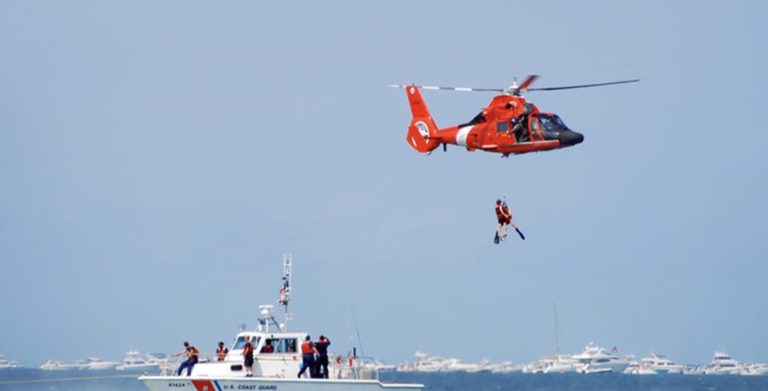BIG Special Discounts Available NOW! Check out our Products
Leader in Waste Management Solutions | PROUDLY MADE IN THE USA ![]()
Leader in Waste Management Solutions | PROUDLY MADE IN THE USA ![]()

[vc_row][vc_column][vc_column_text]While the Coast Guard is considered a Military service, it does not fall under the Department of Defense. From responding to oil, biological, chemical, and radiological spills in the marine environment to the search and rescue of both military and civilians at sea, the Coast Guard needs to be prepared at a moment’s notice when they’re called out.
While the Coast Guard’s roles are focused on maritime safety and security, the Coast Guard operates more than just water vessels; they also use aircraft like helicopters, meaning workers may find themselves on a boat or high up in the air when responding to a call.
Coast Guardsman go through rigorous training to prepare for sea and air travel; however, the civilians they rescue do not. The people they save will feel weak and disoriented, mainly if they’ve been out at sea for hours or days. Flying in a chopper or traveling by boat makes even healthy people nauseous; imagine what it will do to someone who has been injured, exhausted, and weakened by an accident or emergency at sea.[/vc_column_text][vc_column_text]
By storing waste bags on Coast Guard aircraft, helicopters, and boats, Coast Guardsman will always be prepared to attend to the needs of the people they rescue. Waste Bag is an industry standard term that stands for ‘Waste Alleviation and Gelling’ Bag.
While waste bags were originally designed for human waste, the bags are just as effective at managing vomit. Rather than vomiting over the side of the boat into the water, waste bags give people a more dignified way of throwing up. It also lessens the chances of someone falling overboard.
There are also no lavatories in Coast Guard aircraft and helicopters; therefore, a passenger who suffers from air sickness cannot throw up in a sink or toilet onboard. The best solution is to vomit in a waste bag which doesn’t require them to stand up and move about the aircraft. Survivors of rescue operations may be injured or too weak to move about the plane anyway.
Waste bags work much better than regular barf bags, which are no more than a paper bag with a plastic lining. Unlike waste bags, they’re not spill-proof, odor-free, or puncture-resistant. Brief Relief waste bags use a triple barrier bag for liquid and solid waste, including vomit. They contain a blend of polymers and enzymes which convert wastes into a deodorized gel. Because Brief Relief waste bags are made with non-toxic material, they are landfill-safe and can be disposed of in any regular trash can.
Brief Relief waste bags should be stored in every Coast Guard watercraft, aircraft, and land vehicles. As mentioned, waste bags were primarily designed to handle liquid and solid wastes; however, because Brief Relief waste bags are made using unique polymers and enzymes and made of durable material, they serve more than one purpose. [/vc_column_text][vc_separator][/vc_column][/vc_row][vc_row][vc_column][vc_column_text]
[/vc_column_text][/vc_column][/vc_row]